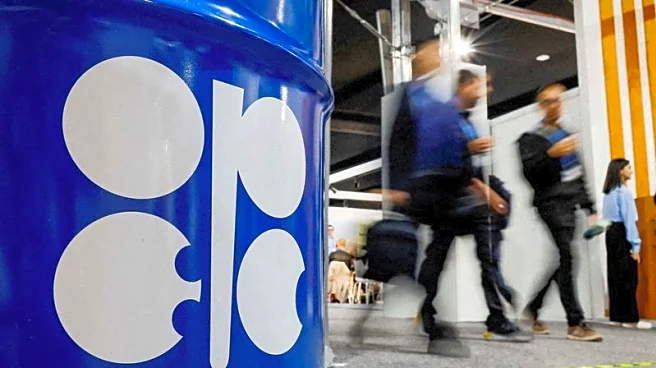What's Happening?
Oil prices fell more than 2% on Wednesday due to oversupply concerns, as the Organization of the Petroleum Exporting Countries (OPEC) projected that global oil supply will match demand in 2026. This marks
a shift from earlier projections of a supply deficit. Brent crude futures dropped $1.35 to $63.81 a barrel, while U.S. West Texas Intermediate crude fell $1.36 to $59.68 a barrel. The International Energy Agency (IEA) forecasted that oil and gas demand could continue to grow until 2050, moving away from previous expectations of a peak in demand this decade.
Why It's Important?
The projection by OPEC and the IEA has significant implications for the U.S. oil industry and global markets. The anticipated balance between supply and demand could stabilize oil prices, affecting U.S. energy companies and consumers. The reopening of the U.S. government may boost consumer confidence and economic activity, potentially increasing demand for crude oil. However, the oversupply could curb price gains, impacting profitability for U.S. oil producers.
What's Next?
The U.S. Energy Information Administration is set to release its outlook later in the day, which could provide further insights into future oil market trends. The U.S. House of Representatives is expected to vote on a bill to restore funding to government agencies, which may influence economic activity and oil demand.
Beyond the Headlines
The shift in OPEC's projections reflects broader changes in global energy policies and market dynamics. The move away from climate pledge-based forecasting to existing policy-based projections may indicate a reassessment of global energy strategies, impacting long-term investment and sustainability efforts.












